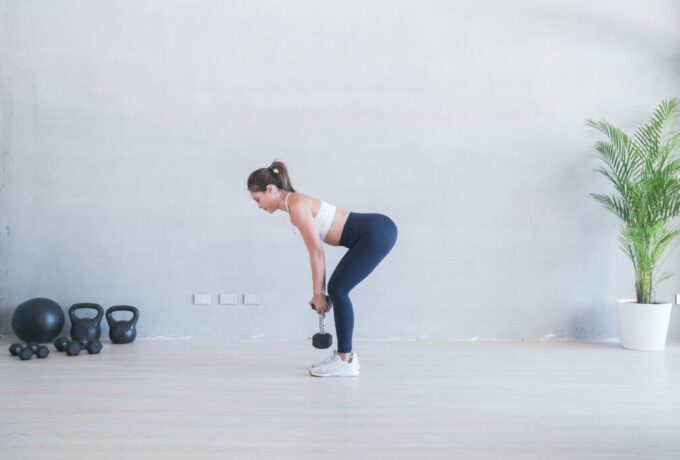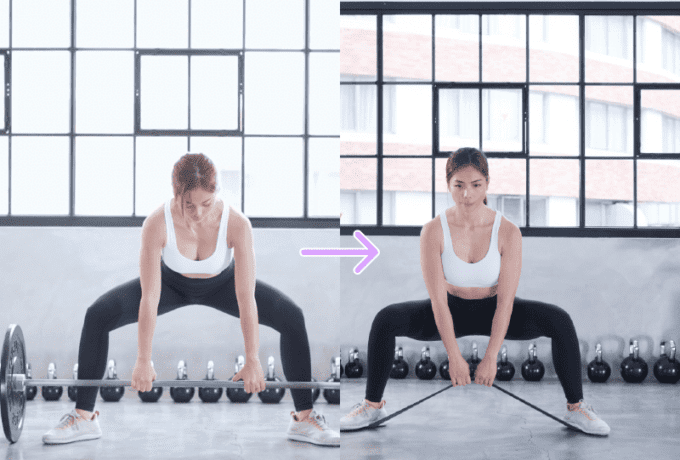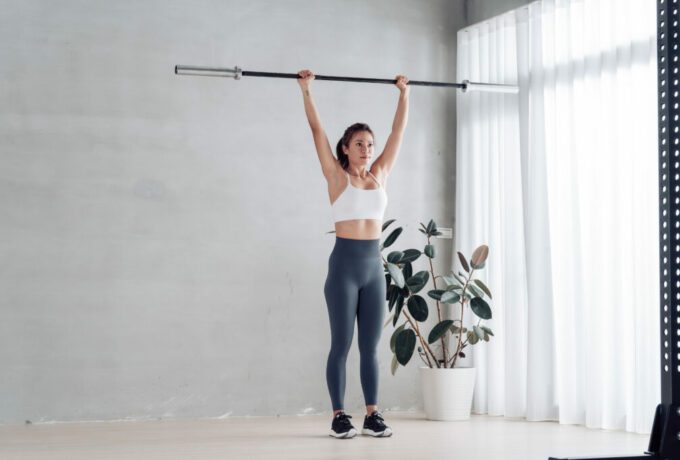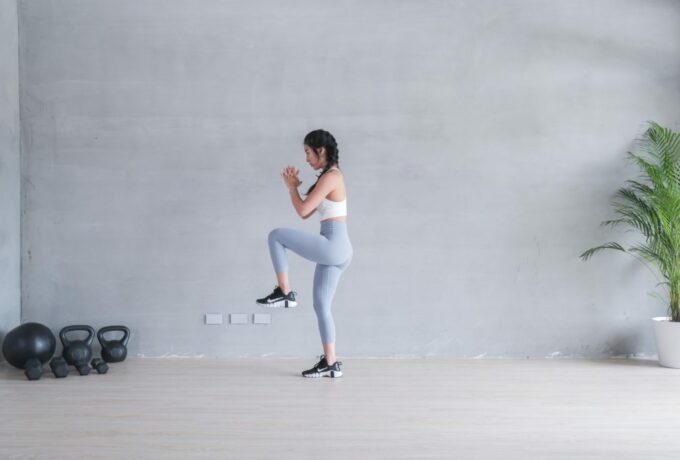Looking for a comprehensive guide on how to do ab exercises for girls and achieve a lean belly and waist? Check out our ultimate guide, complete with a training menu and tips on how long to practice.
Understanding the Abdominal Muscles from the Physiological Structure: Vestigial Line, Kawasaki Line, Mermaid Line …… What is the difference?
The vestigial line refers to the two straight lines on either side of the rectus abdominis muscle, so called because of its vest-like appearance. The Szechuan muscle is the vest line plus a line in the middle of the rectus abdominis with a depression in the fibers that looks like the word “Szechuan”.
The mermaid line is in the lower abdomen, above the pelvis. The mermaid line is a V-shaped line formed by the internal and external obliques on both sides of the abdomen. Because the internal and external obliques are not exercised as often as the rectus abdominis, training the mermaid line is often more challenging.
Functionally, the main role of the rectus abdominis is to curl the abdomen and help the spine bend forward. The main function of the obliques is to stabilize and control the rotation of the body. The various abdominal muscles work together to form a solid wall that protects the spine and internal organs.
In addition, the abdominal muscles are also responsible for stabilizing the spine and helping to transmit power more solidly when you walk or weight train on a daily basis. In fact, lower back pain has a lot to do with core strength. The core plays an important role in our daily lives. Walking and standing for long periods of time require core stability. If the core is too weak, fatigue will easily occur, resulting in lower back pain. Not all lower back pain is caused by a weak core, but many people have lower back pain that is closely related to a lack of core strength.
Causes that affect your abs: Do you have abs with low body fat?
Most people know that abs are hard to see when body fat is high. But does low body fat necessarily mean you can see your abs? Not necessarily. As Nuli has discussed before, there are three key factors that determine the visibility of your abs, and we will repeat them here for your reference.
Body Fat Percentage
Generally speaking, for a girl to see her abs, her body fat percentage needs to be about 20% or less. Many people use Inbody to measure their body fat percentage, but there is a margin of error in the body fat percentage measured by the machine. If Inbody shows your body fat percentage at 16% and you still don’t see any lines on your abs, it is possible that the monitor is underestimating your body fat percentage. Body fat monitors are useful for measuring relative changes in body fat (e.g., from 25% to 20%), but they are still controversial for measuring absolute body fat percentage. Calibration of the device, old and new versions, calculation parameters and methods, and body condition can all affect the body fat percentage measured.
In short, body fat monitors are not absolute. If you think your body fat is low enough, but you still can’t see your abs, you may think there is a discrepancy between your body fat percentage and reality.
Body Fat Distribution
You may have seen some charts of waist lines versus body fat percentage. While these can help you understand a little bit about the relationship between abs and body fat percentage, these charts don’t work for everyone.
Why is it that some girls with 21% body fat can see their abs and others with 18% body fat can’t?
In addition to total body fat percentage, the distribution of body fat is also a big factor. Two girls with the same 20% body fat can have very different body shapes. Body fat distribution is genetically determined. Some people tend to store body fat around the hips, while others tend to store it around the waist.
If your body naturally tends to accumulate fat around your waist, you will need to achieve a lower body fat percentage than the average person to reduce your love handles. On the positive side, if most of your body fat is stored in your abdomen, the other parts of your body such as arms and legs will have relatively less body fat, resulting in a firmer appearance.
Abdominal Muscle Development:
Apart from body fat, abdominal muscles play a crucial role in determining whether you have visible abs or not. Some individuals may have very little body fat but lack visible abs. Abdominal muscles consist of several muscle groups such as rectus abdominis, external obliques, etc. If you don’t work out these muscle groups, you may not achieve the definition you desire even if your body fat is low.

Are abs exercises useful? Does targeted fat loss actually exist?
While genetics and body fat distribution can affect the visibility of abs, exercise can help to develop abdominal muscles and prevent belly protrusion. As the abdominal muscles become more developed, the curves become more pronounced, and even with some body fat covering them, the abdominal lines may still be visible. While you cannot control your genetics, you can make an effort to achieve results.
Although most compound exercises like squats and deadlifts indirectly stimulate the abdominal muscle groups, it is recommended to perform isolated ab exercises for complete training.
Is doing sit-ups enough?
In training the abdominal muscles, it’s essential to incorporate varied and multifaceted exercises to stimulate different parts of the abdominal muscles. Each muscle in the abdomen has a different direction and contraction pattern, so repeating the same exercise is not only ineffective but also leads to an imbalanced development of the abdominal muscles, which can affect their function in stabilizing the spine.
Additionally, the average person tends to engage the upper abs more than the lower abs. To achieve a balanced and complete development of the abs, it’s necessary to perform different exercises that effectively target different areas of the abdominal muscles.
So, how long do you have to work out to have visible abs?
Having visible abs depends on the amount of fat and muscle development in the abdomen. Generally speaking, fat loss will take less time than muscle gain, so the progress of “having abs” and the speed of fat loss are closely related. For many people, a visual change in abs will only occur after losing at least 2-3% of body fat, and thus, the discussion of “having abs or not” is usually in terms of months. Many fast abs methods found on the internet involve quick reduction of body fat through dieting, but these methods have a major impact on body function and are not easy to maintain.
Some people may find that their abdominal muscles become more pronounced after abdominal exercise. This is mainly because these people’s body fat is already low enough, and their abdominal muscle development has already reached a certain level. After exercising, a lot of blood and water enter the abdominal muscles, giving them a sense of expansion and making them more visible. However, this “abs” effect is limited to the trainer’s original body composition and is not achieved in a few days or a few training sessions.
Abdominal class schedule/core training menu
For example, the “High Intensity Ab Burn” schedule in the Nuli app is a complete set of core workouts that includes multiple movements emphasizing the recruitment of different muscle groups. In addition to training the ability to curl the trunk, it also covers stabilization and rotation. Doing the same movements repeatedly is not effective, so take the time to study the key points of the movements, understand the muscle groups that contribute to strength, and combine them with a structured schedule to achieve your training goals more effectively.
High intensity ab burning program:
40 seconds per move, 4 cycles total
Action 1: Stick side kick
Action Two: Russian turn
Action 3: Reverse alternating foot touch
Action 4: Reverse curl
Other common abdominal exercises include plank, dead bug, bicycle crunch, mountain climbers, side plank, and more.
The Core Training Movements
When it comes to core training, it’s important to avoid simply doing endless sit-ups or crunches in an attempt to hit a certain number or achieve results quickly. These exercises can actually cause strain on other parts of your body, such as your neck and lower back, and may not even be effective for strengthening your abs. Instead, it’s important to focus on engaging your abdominal muscles properly.
How can you check whether your abdominal muscles are really firing or not?
To make sure you’re activating your core correctly, try lying on your back with your feet lifted about 10-15cm off the ground. If your back is arched and there’s space between your back and the ground, your core is not engaged. To activate your core, exhale and press your lower back into the ground, feeling your abs contract.
How to activate the core? To master the right abdominal strength?
If you’re a beginner looking to strengthen your core, it’s important to start with exercises that are appropriate for your level. Rather than jumping into advanced moves, focus on mastering basic exercises like planks, bridges, and bird dogs.
The Core Movements Beginners Need to Practice
If you want abs, what should you do?
Remember that developing visible abs requires both fat loss and muscle development, and progress may take time. However, with consistent effort and a focus on both exercise and diet, you can achieve your goals. Consider finding a workout buddy or joining a community like Nuli to stay motivated and accountable.










